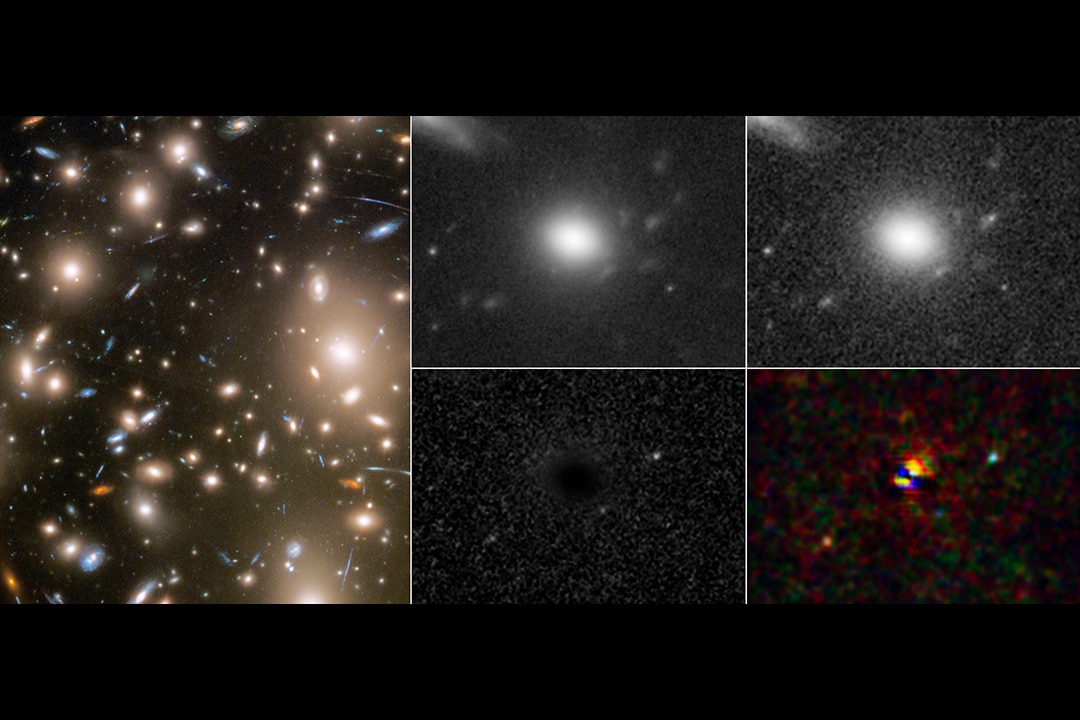Create a free profile to get unlimited access to exclusive videos, sweepstakes, and more!
Hubble captured a supernova at three different ages in one image
It's a unique window into the death of a star.

The universe is big, it’s old, and there’s a lot of weird stuff out there. Including the Muppets. In Muppets from Space (now streaming on Peacock!), the 1999 comedy featuring our favorite felt-covered friends, Gonzo is experiencing something of an identity crisis. He seeks the truth about his past, reviewing memory after memory, but he finds only rejection until he is approached by a familiar looking alien species. Gonzo learns that he feels so alone because he’s not from around here, his true home is among the stars. Of course, by the time the credits roll, Gonzo learns the value of found family and remains on Earth with his Muppet friends.
We, like Gonzo, are also in search of the truth about our past. Astronomy is, at its heart, a scientific obsession with the past. Everywhere we look in the cosmos, whether in our own solar system or the furthest reaches of the visible universe, we are peering backward through time. Every once in a while, we find something truly bizarre.
Recently, an international team of astronomers discovered something weird in the early universe, which is shining a light, so to speak, on how stars die. Using Hubble data, astronomers identified an 11-billion-year-old supernova in the process of exploding (click here for the high res photo). Even better, thanks to some strange gravitational effects, Hubble caught the supernova at there different moments all in a single image. That’s according to a recent story published in the journal Nature.
Light travels through a vacuum at a fixed speed. That means that, generally speaking, you can follow light backward through time. The farther the source of light, the older it is when it reaches us. But things get complicated when there’s big stuff between the light source and us, which is the case with the recently discovered supernova. From our perspective, the supernova is located behind a galaxy cluster called Abell 370. The immense gravity of the cluster distorts spacetime and warps the path the light travels in a process known as gravitational lensing. These events can be a major assist from the universe, allowing us to image objects we wouldn’t otherwise be able to see.
In this case, however, all of the light didn’t lens in a single direction. Instead, it arrives on the other side of Abell 370 in three different locations. As the light bent around the galaxy cluster along one of its three paths, some of it arrived sooner than the rest. Those three paths each had different travel times, either because they were physically longer or because of gravitational distortions to spacetime itself. Consequently, we get to see the death of a star at three different moments, all at the same time.
That provided astronomers with a timeline of the early moments of the explosion, something which is rarely seen because it is so brief, often lasting only a few hours or days. Capturing these moments takes a certain amount of luck, but finding this object was like putting our name in the raffle three times instead of once.
Interestingly, the image itself isn’t all that new. The study authors found the event by searching through Hubble’s archives and looking at old images. Wenlei Chen, an astronomer from the University of Minnesota and lead author of the study, designed a machine learning algorithm to sift through Hubble’s archival data looking for interesting events. This is what it found. The discovery is a reminder of the value of Hubble, even so long into its mission.
Using the three moments found in the image, researchers were able to reconstruct the metamorphosis of the star over time. They saw a rapid change in color which corresponds to a rapid change in temperature. In one part of the image, the star looks blue and hot, in a later part of the image it shifts toward red as it cools down. They were also able to trace this metamorphosis backward to determine the initial size of the star. That’s because the brightness and rate of cooling are directly tied to the initial size of the star. Seeing the supernova at three different stages allowed researchers to dial back the clock and envision the star in its former glory. They estimate it began as a red supergiant roughly 500 times larger than the Sun.
Looking forward, the team has reserved time with the James Webb Space Telescope in hopes of finding even more distant, and therefore older, supernovae. They hope it might help us learn if the stars in the early universe were at all different from the stars we see today. We all want to know the truth about our past, if not personally than at least broadly, and telescopes like Hubble help us do that, one weird image at a time.


























